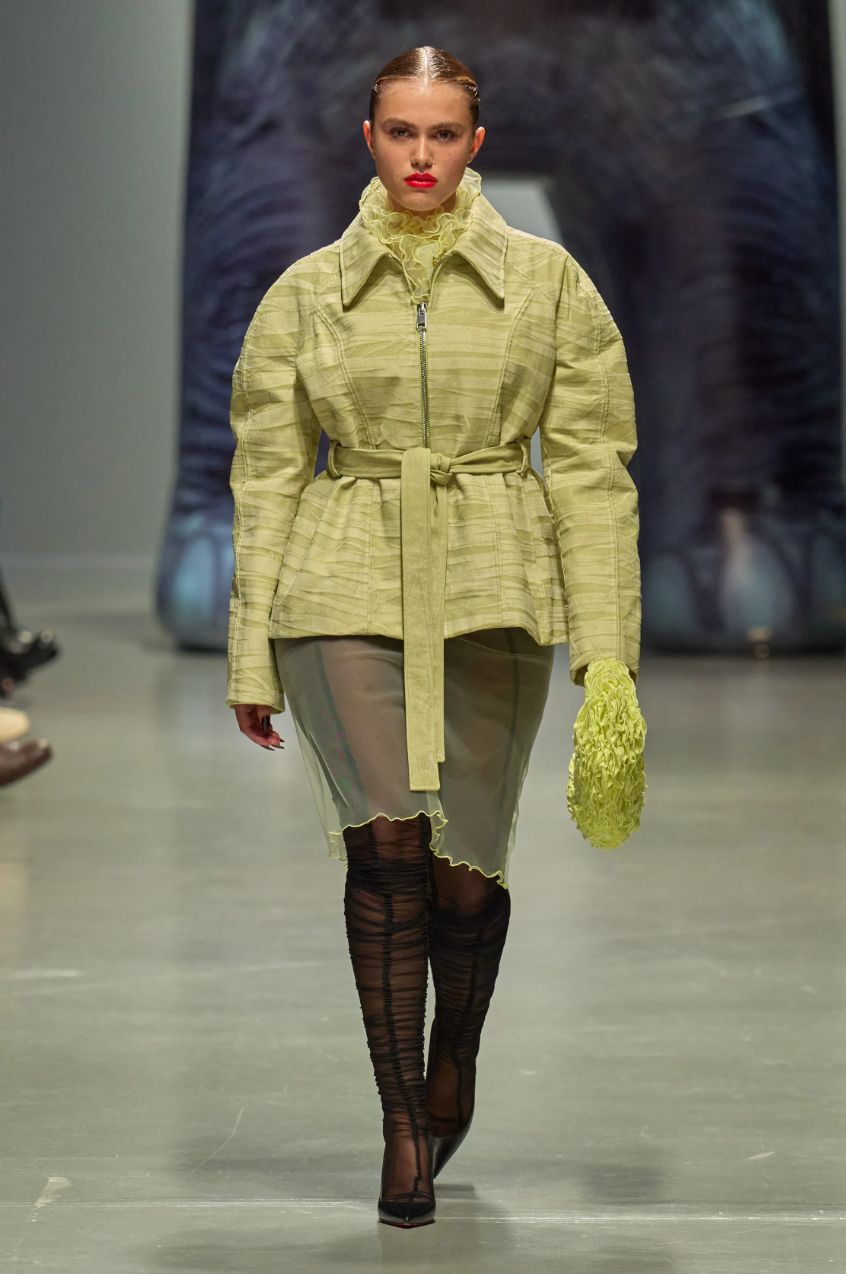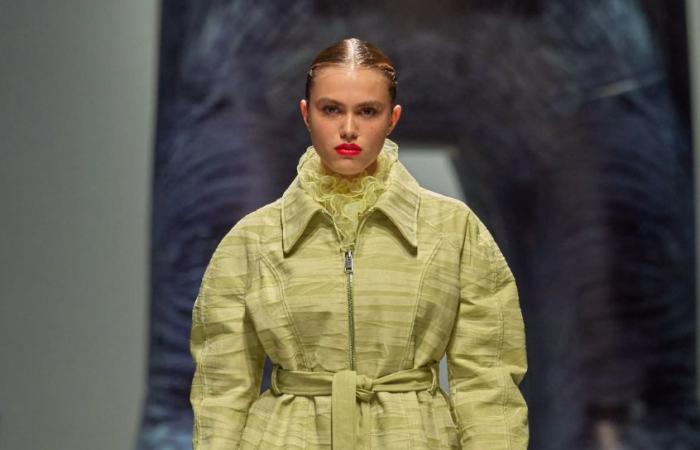Namilia spring-summer 2025
The end of bodypositivism?
We thought we were done with the diktat of ultra-thinness. When Ashley Graham, Precious Lee or even Jill Kortleve have become top model like the others, a new era for self-acceptance seemed to emerge in women’s history. In winter 2022, Tagwalk data recorded the presence of models Paloma Elsesser et Alva Claire in thirteen and twelve parades respectively. A score which confirmed the report from The Fashion Spot, according to which, since 2018, body types have continued to diversify. But, during this Spring-Summer 2025 Fashion Week, everything changes. “The trends are all oriented towards mini clothes which can only highlight very thin bodies”, analyzes Anna Schlaifermodel and professor at the École Duperré. While the collections began to integrate the concepts of inclusiveness and body positivism, this season we had to count on a few fashion shows (including Chanel et Esther Manas) to ensure that style for everyone, and plus-size models, still have a future. “It’s impossible to say who is under Ozempic but everyone has become even skinnier,” says a casting director before continuing: “we are seeing a real return of thinness as an underlying trend, it’s scary. » Indeed, standards relating to women’s physiques have followed a trend curve for more than a century. From the 1920s and the creation of the sporty women’s wardrobe, the myth of the perfect and toned body appeared. Until then, women could resort to the famous trompe-l’oeil that were corsets and girdles. But, by freeing them from these shackles, fashion has forced them to become this sculpted body, without artifice. So, even if, in 2022, models plus size represented almost 3% of the profession’s workforce, the vagaries of trends take their course.
Chanel spring-summer 2025

Ester Manas spring-summer 2025
“I was told that the big ones no longer sell,” confides a designer after a meeting with buyers. Does this mean that those whose body positivity is the working tool obtain fewer jobs? “It’s been a long time since I was surprised by the professional disparities between models skinny and model plus size », says Anna Schlaifer. Nevertheless, she remains positive: “I work on a lot of diverse projects, in fashion and in cinema. The phenomenon Ozempic don’t make me so invisible. On the other hand, it reveals a social desire to weaken women. We began to be powerful, to claim our diversity and now theOzempic comes to fold the cards. » A reversal of the situation which is observed in the daily life of the community. “A model who had gained a kilo stopped being booked. The incentive to lose weight speaks for itself. But when a designer tells a super-thin model that she’s beautiful, others see what you have to look like to get the job. Even the models plus size [au-delà de la taille 48] or in between [entre les tailles 38 et 44] have lost a lot of weight,” worries the casting director. Behind the scenes, therefore, everything happens as if heroin chic, a starving and contested figure of the 1990s, returned in a weaned version, falsely natural because biologically modified by all kinds of drug treatments. A return to the future which benefits no one and questions its origins.
Food, a fashion phenomenon
The reasons for the phenomenon Ozempic are multiple and cannot be attributed to fashion alone, which depends on and permeates many other image sectors with unparalleled visibility. However, if we make the effort of self-evaluation, we must recognize that the fashion and beauty industry has continued to aestheticize food rather than rethinking it in depth. On the cosmetic side, we have started to use and abuse the food lexicon. Honey cream, facial jelly, caviar mask, strawberry seed scrub, body milk… A food amalgam reinforced by the trend of supplements aimed at balancing the lifestyle to maintain one’s physique thanks to brewer’s yeast, fermentation of mushrooms, royal jelly, etc. In the all-scientific era, the medicinal vision of beauty causes confusion between the need to consume food and the fact of ingesting pills or creams with potentially miraculous but in no way vital virtues. As already summarized in 2010 by the sociologist David LeBreton : “in the absence of nourishment, we nourish our skin. » Fashion is not left out either. Edibles have reached such a metaphorical level that they have gradually prevented awareness of the importance of representations. In 2014, Moschino unveils an autumn-winter collection featuring McDonaldstransforming packets of fries into handbags and employee uniforms into sexy mini dresses.








